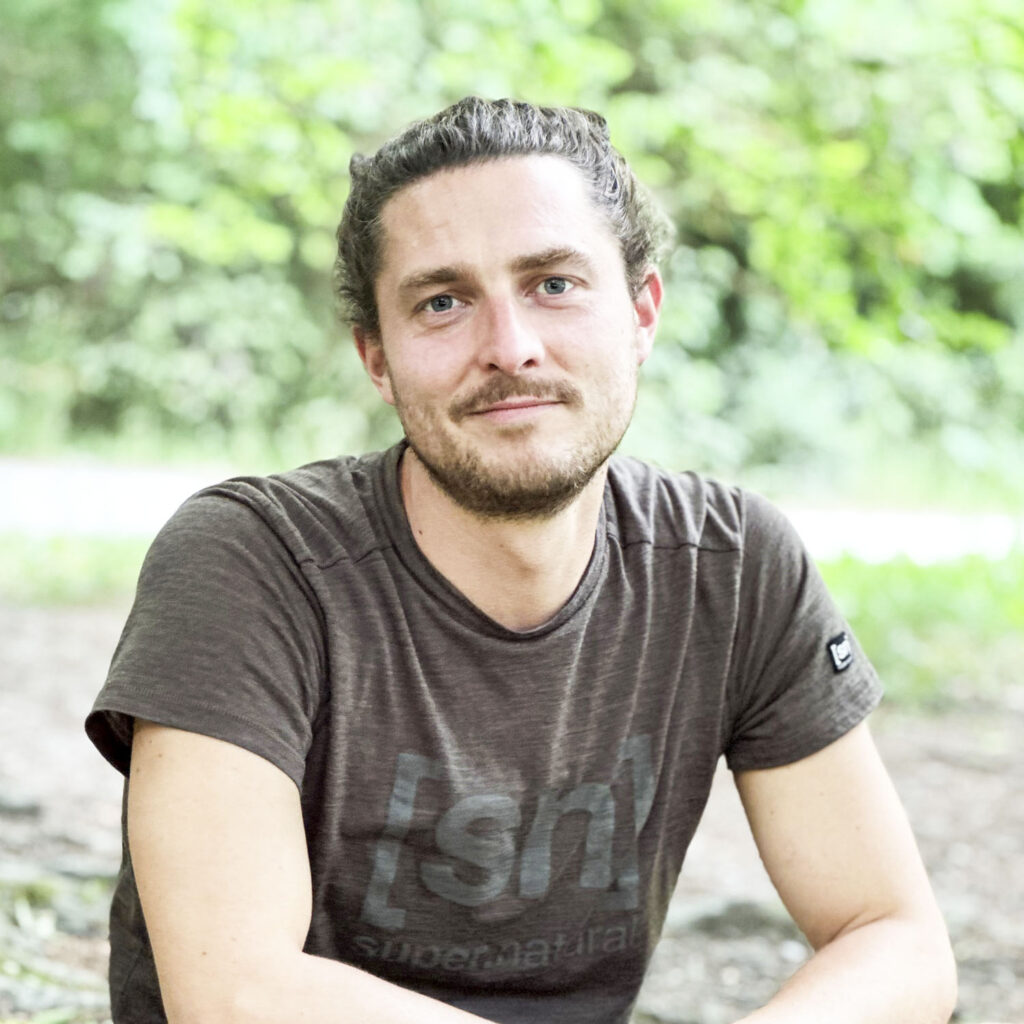Is it possible to create a workplace where “professional” roles are maintained but feelings don’t need to be suppressed? Where, without fear or shame, we can express our concerns, work through unresolved conflicts, or ask for help when we get overloaded?
At the 2020 World Goetheanum Association Forum, a workshop was held with anthroposophical entrepreneurs and employees on the question, “How do we deal with emotional vulnerability in the workplace?” We dared to speak with each other about actual incidents of harm from our private and professional lives in order to create an experience of a culture that is open to feelings. It was an awakening moment when two women expressed their gratitude for the space and summoned their courage to reveal their personal suffering caused by years of frustration with their superiors. Filled with hope and a longing for change, they shared their pain. The empathy of people in the group encouraged some to speak out and to reveal their own wounds. Tears of relief flowed, and it felt healing. But some other participants in the group did not wish to or were unable to engage with this spontaneous “display of feelings.” They remained on an intellectually distant level or were even dismissive, creating a situation of social tension, until a managing director finally said, “I’m not here in order to listen to your sentimentality!” This situation demonstrated the explosive nature of this topic but also its potential. So, we founded the “Vulnerability as a Resource” [Verletzlichkeit als Ressource] working group, in which seven people have been on a journey of research ever since.
Social Masks
The majority of people spend around a third of their lives at work. We all experience a lot of emotions “at work,” and wounding sometimes occurs. Can it now also be a place where we are able to be wholly present, with our vulnerabilities? In many businesses, employees and managers still uphold what may be considered an old understanding of “professionalism”: a superficial, stilted, good-humoured “pseudo-harmony” of social interaction. Personal crises and deeper feelings are kept outside the workplace. Where does a perpetual suppression of emotions lead to? We are already living in a time when depression is one of the most common illnesses worldwide.
The number of working days lost due to mental health issues has risen by almost 50 percent in the last ten years.1 We think it is time to bring a new, emotionally open culture of vulnerability into our organizations, where there is room for everything that is part of being human. To achieve this, managers (above all) will have to find a new perspective, one in which professionalism is characterized by emotional competence and empathy, and leadership is understood as a serving task that gives more room for listening, receiving, and enabling, rather than structuring and directing. Such “transformative leaders” would work on developing themselves first, and then their organizations. In turn, the organizations would have a transformative effect on the whole economic system.2
Authentic Unpredictability
Our working group has invited groups of employees together for workshops in order to test methods and exercises that can help create this transition to a new culture of togetherness. In the workshop, we initially encounter a threshold: creating an atmosphere of safety, confidentiality, and freedom of judgment, wherein participants are willing to be vulnerable with each other. Through an open and genuine sharing among the individuals in the group, we are able to enter into a processual space, one that is unpredictable, trusting, and open-ended. In the beginning moments, fears may be present (for example, of being overwhelmed by one’s feelings or of losing control), all of which may produce a temporary obstacle. We often perceive spaces of vulnerability as a risk at first. And yes, when we begin to speak truthfully about our emotions within a cultural context that traditionally was characterized by avoidance of conflict, suppression of feelings, or just keeping silent, some kind of feeling of “chaos” is a reasonable part of the experience.3 Inner soul processes wash over frozen structures like waves upon the shore. One can begin to struggle against the emotions that are rising up. Therefore, a clearly defined and “professional” framework is important so that the group does not get lost in the surge of emotion.

Now the magic of transformation can happen. The light of consciousness can penetrate into the inner shadows (e.g., rejection, fear, guilt, shame). At the same time, there can be an experience of a shared expansion of consciousness. People become more sensitive to their inner feelings and to the state of soul of those around them. It is precisely here that the healing potential of a culture of vulnerability can be found: In an interplay between one’s self-acceptance (“I am ok with everything present within me”) and the experience of empathic acceptance by the group. The attention to one’s own feelings, to one’s own wounds, opens up space for compassion. This openness enables a deep experience of connectedness—a fraternal feeling. Explicitly experiencing the reality of the life within our souls paves the way for the emergence of an “authentic community.”4 Such connectedness can bring forth higher qualities of consciousness: Transcendence of contradictions and potential conflicts, tolerance of individual particularities, and collective wisdom.
We have observed how participants express a new joy and sympathy for being and working in the group. They get more involved with their personal experiences, needs, and ideas. This can also lead to a restructuring of the organization. A few years ago, in a business that I was able to accompany, several employees were able to express their painful feelings of injustice and fear of dismissal for the first time in an open space of emotional trust. The old power structure could no longer continue in the new transparency. There was a change in leadership on the initiative of the collegium, with the collaborative goal of turning employees into co-entrepreneurs. This led to a development of power from within the collegium that was followed by new working procedures, organizational structures, and an expanded business model.
Culture of Vulnerability
Joseph Beuys called one of his most famous installations “Show Your Wound” and, when asked by a journalist about its meaning, he replied, “. . . because the only way to progress and become aware of it is to show it.”5 So perhaps a new “culture of vulnerability” that we practice and live in our organizations can lead us to a fellowship, a siblinghood, that we need today more than ever in business, politics, and towards the Earth?
In recent years, our working group has begun to gather initial insights into a “culture of vulnerability” in workshops and interviews. We have learned, for example, that the courageous human being who is the first to show their vulnerability in a group opens up a field of new possibilities for the group and paves the way for vulnerability for the other participants. The more courageous your own step into inner authenticity towards your fellow human beings, the greater the potential for healing and transformation for each individual and the group. However, it is extremely important to respect your own boundaries and also to sense the boundaries in the group. Spaces for vulnerability must be expectation-free and voluntary, and conscious awareness must always be present. Everyone is free to show themselves—but no one has to—and only to the extent that it feels right for each individual and the group. It is important to find a delicate balance between radical transparency and diplomatic restraint. Not every group is ready to receive every kind of expression of personal suffering. A wound that is revealed at the wrong moment, from out of the wrong energy (e.g., psychological crisis), can also trigger crisis reactions in others. This does not lead to a healing bond but rather to further injury. Particular attention must be paid to experiences of trauma: Which of my wounds belongs here in this circle? What can be healing for the group or for myself within this particular group? Where may I, perhaps, be burdening the shared space with my personal distress, which actually would be better dealt with in a different setting (e.g., therapeutic)?
In order to further understand and unfold the potential of a culture of vulnerability in the workplace, we are looking for groups or companies that would like to join us on this collaborative journey of research.
More at Verletzlichkeit als Ressource
Translation Joshua Kelberman
Images Philipp Tok
Footnotes
- Data from the health insurance company DAK-Gesundheit (Lörrach, Germany), 2012–2022.
- Benjamin Brockhaus, Transformative Unternehmensführung und ihre geistigen Grundlagen: Die Bewusstseinshaltung zukunftsfähiger Organisationen [Transformative entrepreneurial leadership and its spiritual foundations: the consciousness of sustainable organizations], (Frankfurt am Main, Germany: Info3, 2019).
- M. Scott Peck, The Different Drum: Community-Making and Peace (London: Arrow Books, 1990, repr.).
- Ibid.
- Jost Herbig, “Die Dinge haben ihre Sprache. Interview mit Joseph Beuys” [The things have their speech. Interview with Joseph Beuys] In: Süddeutsche Zeitung [South German Newspaper] (January 26/27, 1980). See Alain Borer, The Essential Joseph Beuys (London: Thames & Hudson, 2016), p. 25.





